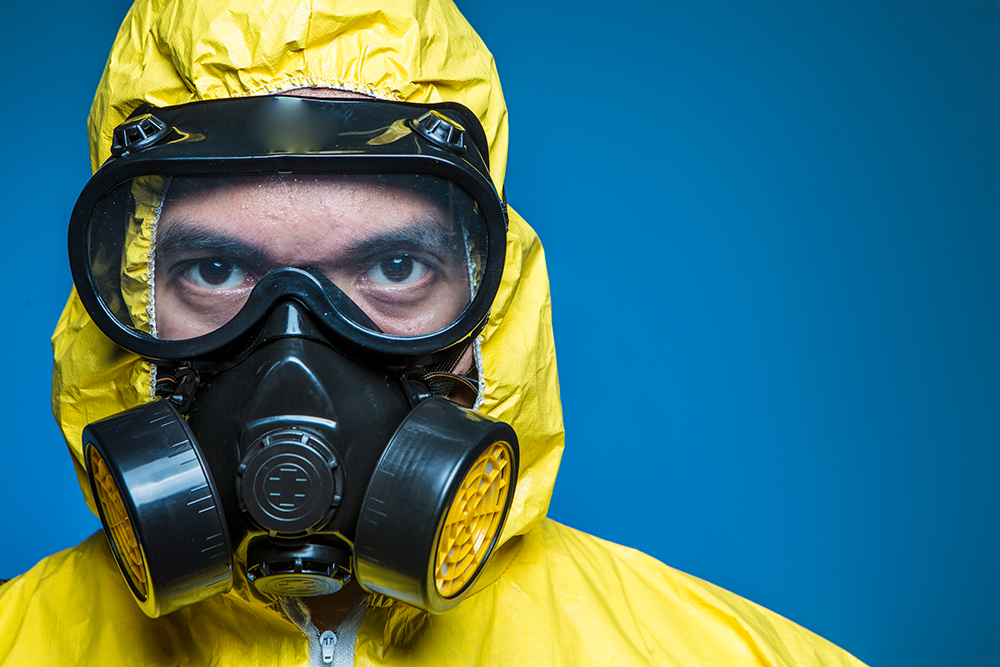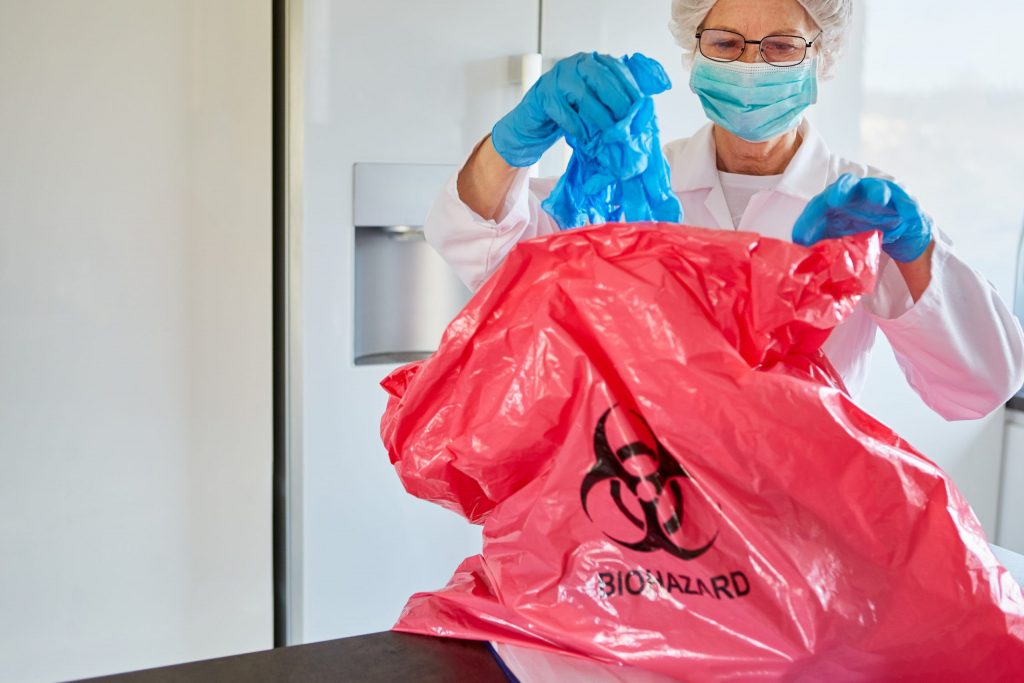Specialist Biohazard Cleaning and Purification for Blood, Bodily Fluids, and Hazardous Products
In the world of biohazard cleansing and purification for blood, bodily liquids, and unsafe materials, precision and knowledge are extremely important. The possible health threats linked with direct exposure to biohazards highlight the critical need for thorough handling and complete cleaning. Specialized training gears up experts with the knowledge and skills required to address these dangerous circumstances effectively. Nonetheless, it is not just concerning tidying up; the relevance of utilizing appropriate purification strategies can not be overstated. As we browse the intricate landscape of biohazard clean-up, comprehending the nuances of laws, conformity, and the customized tools at play becomes critical in guaranteeing a safe and extensive decontamination process.
Wellness Risks of Biohazard Direct Exposure
Direct exposure to biohazards postures substantial health and wellness threats that can result in severe consequences for areas and people alike. Biohazards include a variety of biological compounds, consisting of blood, physical fluids, mold and mildew, microorganisms, viruses, and other potentially transmittable materials. When individuals come into call with these biohazards, whether through crashes, incorrect handling, or environmental exposure, they face the threat of having major diseases or illness.
Among the key health and wellness threats connected with biohazard exposure is the transmission of infectious illness. Bloodborne microorganisms such as HIV, liver disease B and C, and various microorganisms can be existing in biohazardous products, posturing a direct danger to human health. Inhaling air-borne biohazards like mold and mildew spores or entering into contact with polluted surface areas can also bring about respiratory problems, allergic reactions, and other adverse health impacts.
Additionally, biohazard direct exposure can have long-term wellness ramifications, with some diseases manifesting years after the preliminary contact (Blood Cleanup). For that reason, it is crucial to prioritize correct biohazard cleansing and decontamination to minimize these health and wellness threats and make sure the security of individuals and communities

Specialized Educating for Biohazard Cleaning
When it involves dealing with biohazard cleanup efficiently and safely, specialized training plays a fundamental role in ensuring appropriate purification procedures are adhered to. Biohazard cleaning needs details knowledge and skills to successfully minimize dangers connected with bloodborne virus, bodily liquids, and harmful materials. Professionals educated in biohazard cleaning undergo rigorous direction on how to securely handle, eliminate, and take care of biohazardous materials to avoid contamination and exposure.
Specialized training for biohazard cleanup covers an array of essential subjects, consisting of appropriate personal safety devices (PPE) usage, bloodborne virus understanding, decontamination methods, and dangerous waste disposal protocols. Individuals learnt biohazard cleanup are furnished with the necessary knowledge to analyze contamination levels, identify potential dangers, and execute proper cleaning procedures in conformity with governing criteria.
Continuous training and education and learning are extremely important in the area of biohazard clean-up to stay updated on the most up to date decontamination technologies, security methods, and policies. By investing in specialized training, biohazard clean-up professionals can properly react to emergency situation clean-up scenarios and protect both public health and the setting.
Significance of Appropriate Purification Strategies
Utilizing correct decontamination strategies is important in biohazard cleaning to successfully get rid of hazardous products and lessen health threats. Efficient decontamination not just makes sure the elimination of visible traces of blood, bodily liquids, and other biohazards but likewise targets invisible virus that might present significant health and wellness hazards if not correctly eliminated. By adhering to stringent decontamination procedures, trained professionals can substantially reduce the danger of exposure to unsafe microbes, viruses, and bacteria that could lead to conditions or infections.
Correct decontamination techniques entail making use of specific devices and anti-bacterials that are her response especially created to reduce the effects of biohazards successfully. Detailed cleaning and disinfection of infected locations are essential to avoid the spread of microorganisms and guarantee a safe setting for passengers. Furthermore, the appropriate disposal of biohazardous waste following purification procedures is essential in preventing contamination of various other surfaces or people.

Devices and Devices for Safe Cleanup
When dealing with blood, physical fluids, or harmful products, biohazard cleaning specialists count go to these guys on specialized gear to reduce exposure risks and completely sanitize the afflicted area. In addition, biohazard cleaning packages including anti-bacterials, absorbent products, and biohazard bags are made use of to securely contain and dispose of polluted products.
Advanced cleaning devices like hospital-grade anti-bacterials, HEPA-filtered vacuums, and fogging machines are used to sterilize surface areas and get rid of biohazards effectively. Specialized tools such as sharps containers and biohazard waste disposal bins are made use of to safely take care of sharp objects and biohazardous waste materials. By making use of the right equipment and devices, biohazard cleaning professionals can guarantee a complete cleaning procedure that prioritizes security and lessens wellness threats for both employees and owners of the affected area.
Laws and Conformity in Biohazard Cleansing
Correct adherence to guidelines and conformity criteria is paramount in biohazard cleaning to ensure the safety of both workers and the atmosphere. Federal government companies such as OSHA (Occupational Safety and Wellness Administration) and the EPA (Epa) have developed details guidelines for biohazard cleanup procedures to minimize health threats and environmental contamination. These guidelines cover a series of facets consisting of the handling, transportation, and disposal of biohazardous materials, along with the necessary training and safety tools required for employees associated with the cleaning procedure.
Biohazard cleansing companies must remain current with these regulations to ensure that their operations meet the called for security criteria. Failing to abide by these policies can cause extreme repercussions, consisting of penalties, legal action, and threatening the health of individuals and the environment. By following strict policies and compliance actions, biohazard cleaning firms can efficiently alleviate dangers and guarantee a complete and secure cleaning procedure for link all parties included.
Verdict
In verdict, biohazard cleansing and purification need specific training, correct techniques, and adherence to regulations. Direct exposure to blood, physical liquids, and hazardous products presents substantial wellness dangers, making it critical to use the ideal equipment and tools for safe cleanup. By following rigorous procedures and guidelines, specialists can effectively mitigate the dangers related to biohazard exposure and guarantee the security of both themselves and others.
As we browse the complex landscape of biohazard cleanup, understanding the subtleties of laws, compliance, and the customized tools at play comes to be imperative in making certain a complete and risk-free purification process. (Blood Cleanup)
When it comes to handling biohazard cleaning successfully and safely, specialized training plays an essential duty in making sure appropriate decontamination procedures are complied with.Using appropriate purification strategies is crucial in biohazard cleaning to properly eliminate unsafe materials and reduce health dangers. Furthermore, biohazard cleaning sets including disinfectants, absorptive products, and biohazard bags are used to safely contain and get rid of of infected items.
Government firms such as OSHA (Occupational Safety And Security and Health Management) and the EPA (Environmental Protection Company) have actually established particular standards for biohazard cleaning procedures to decrease health dangers and environmental contamination.
Comments on “Mold Remediation Providers: Securing Your Residential Property from Mold Damage”